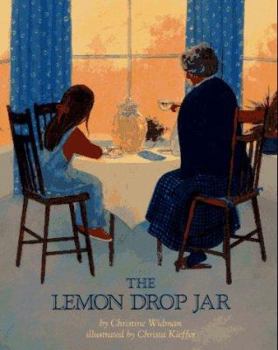The Lemon Drop Jar
Select Format
Select Condition 
Book Overview
During a visit to her great-aunt in the country, a little girl discovers a wonderful cut-glass container in the kitchen, a discovery that leads to Aunt Emma's story about how she received the family... This description may be from another edition of this product.
Format:Hardcover
Language:English
ISBN:0027927598
ISBN13:9780027927597
Release Date:September 1992
Publisher:Simon & Schuster Children's Publishing
Length:32 Pages
Weight:0.92 lbs.
Dimensions:0.4" x 8.3" x 10.3"
Age Range:4 to 8 years
Grade Range:Preschool to Grade 3
Customer Reviews
2 ratings
Great gift for favorite teacher
Published by Thriftbooks.com User , 21 years ago
We bought this book for my daughter's first grade teacher several years ago as a rememberance of the year. We recently heard from her teacher, and she told us how special that book was and how she thought of my daughter each time she read it (we have moved away from the town). We bought a jar and filled it with lemon drops to go along with the book. It's a lovely story.
Teachers - use this book to connect math and literature.
Published by Thriftbooks.com User , 25 years ago
Lemon Drop Jar is a good lead-in to a math estimation or division lesson. Begin by reading The Lemon Drop Jar (be sure to share the pictures and discuss it.) Ask if the children have ever tasted lemon drops? Would they like to? K-4 Show the class a candy jar half full of lemon drops. Ask them to estimate how many lemon drops they think are in the jar. Actually count (Children can suggest easier ways to count - perhaps by 10's) Record the number of lemon drops in the jar. Then show a second identical candy jar full of lemon drops. Ask the class to estimate how many lemon drops they think are in the full jar. Go back to the half full jar and remind the children of how many lemon drops there are in that jar. Then add 10 more. Ask if the children would like to change their estimates? Continue adding lemon drops 10 at a time and tallying the new total on the board. Stop once in awhile to allow children to change their estimates. Discuss whether or not their estimates are close. Determine how many lemon drops it took to fill the jar and how many are in each jar. When everyone agrees on the amount, K- 2 should stop here and the teacher can then share the lemon drops with the students. To extend this activity for 3rd & 4th graders ask the class to work in partners and determine how many lemon drops each child will get if they are shared equally. They should each show their thinking on paper and hand it in. Remind them to show their thinking using words, pictures and numbers. You may wish to allow them to use manipulatives. When everyone agrees on the number that each child should receive is equally dividied, share them with the children.





